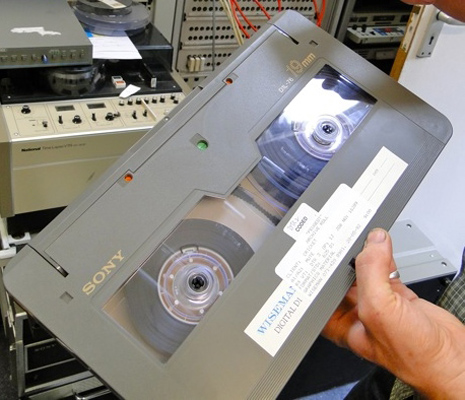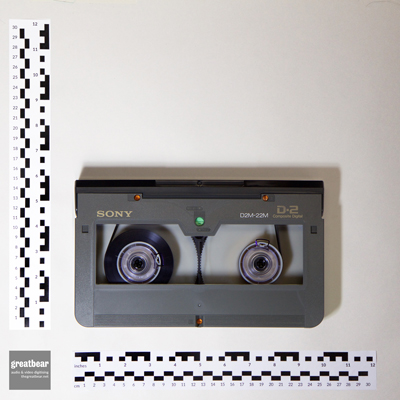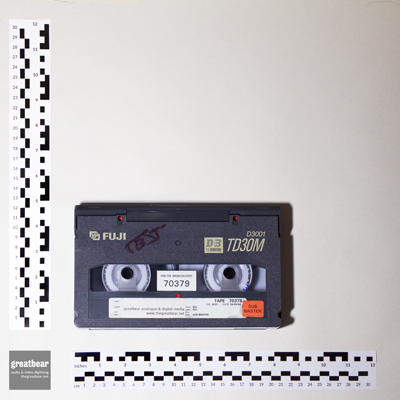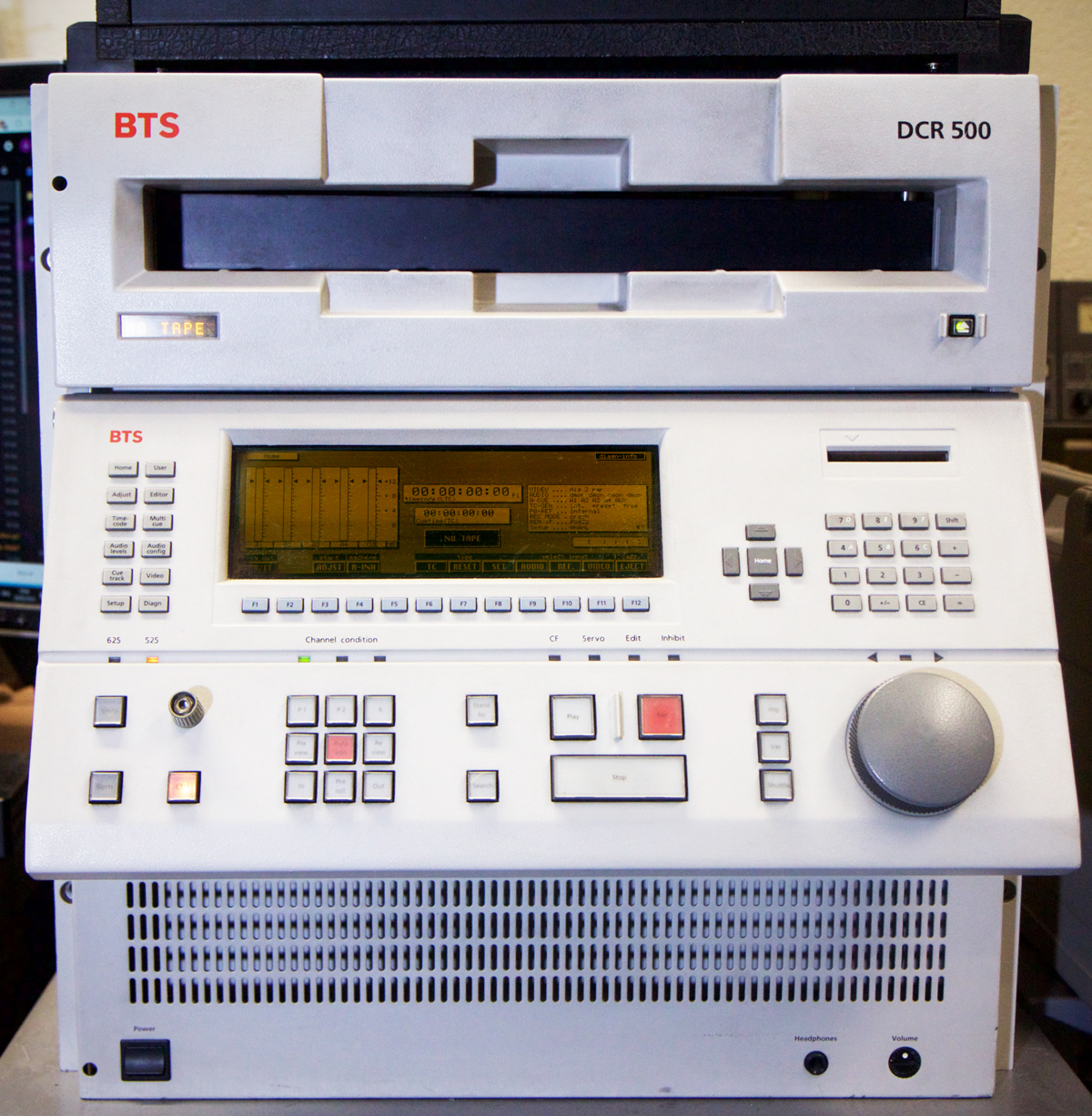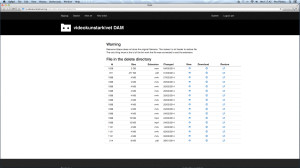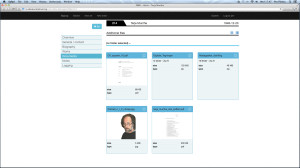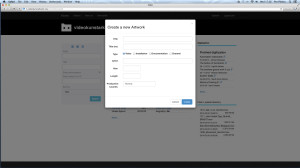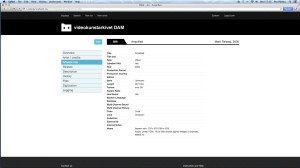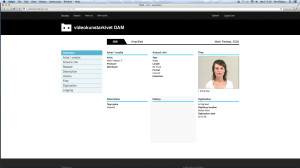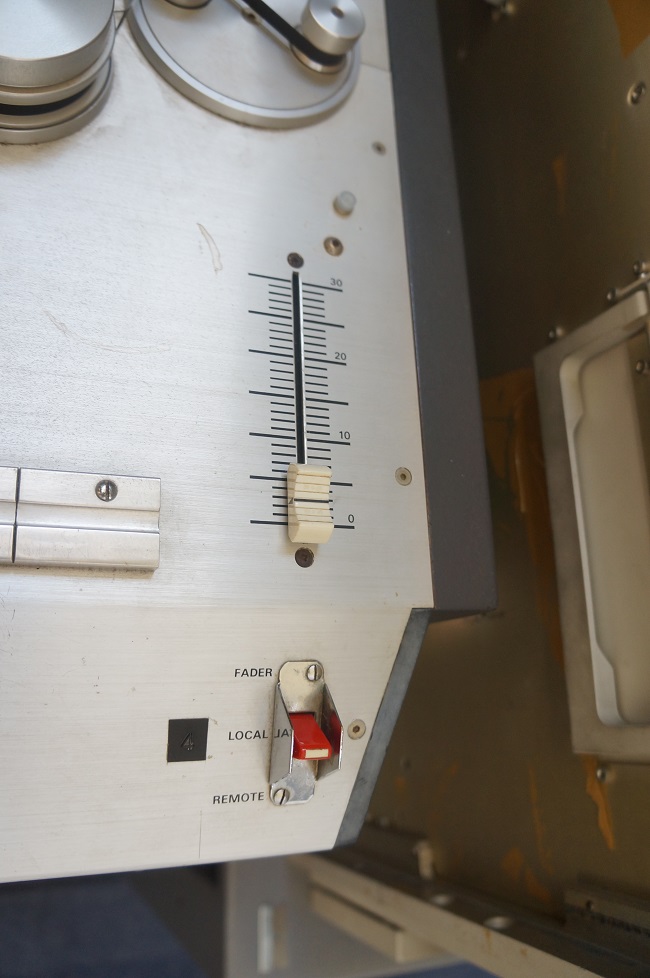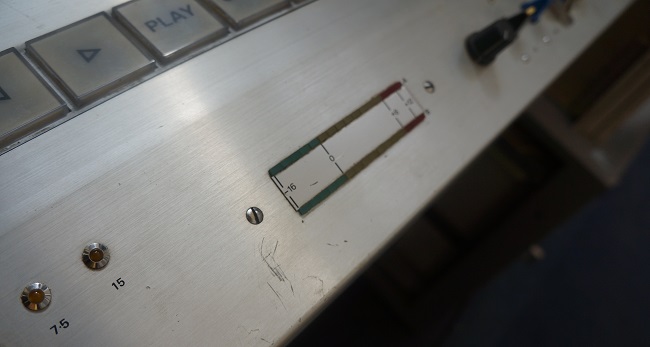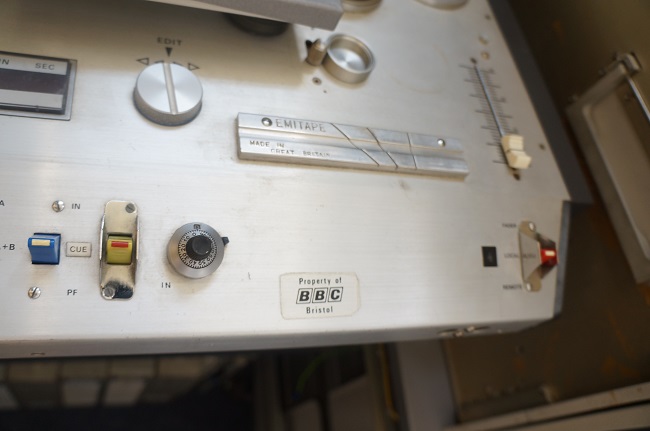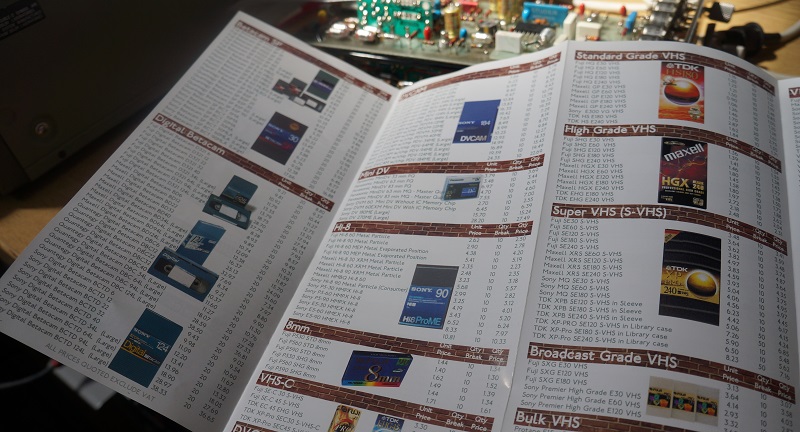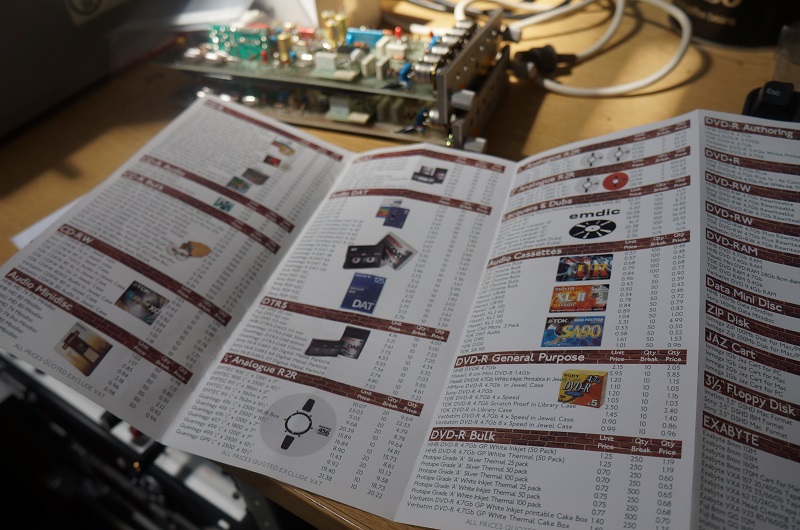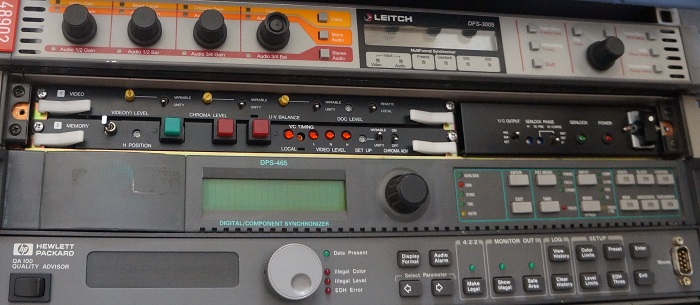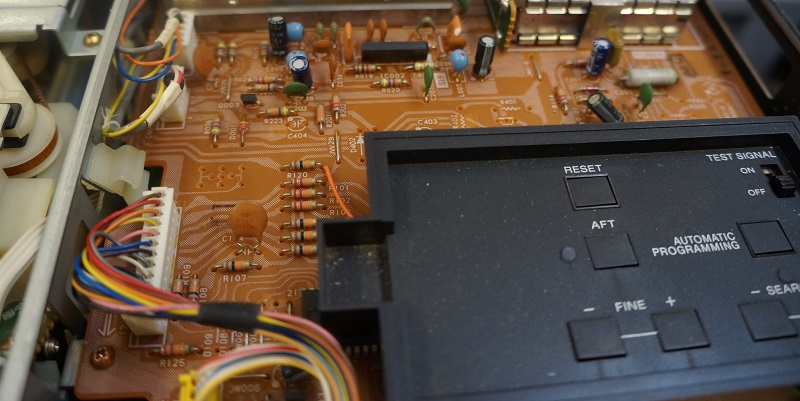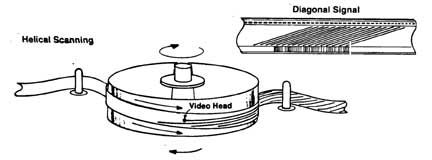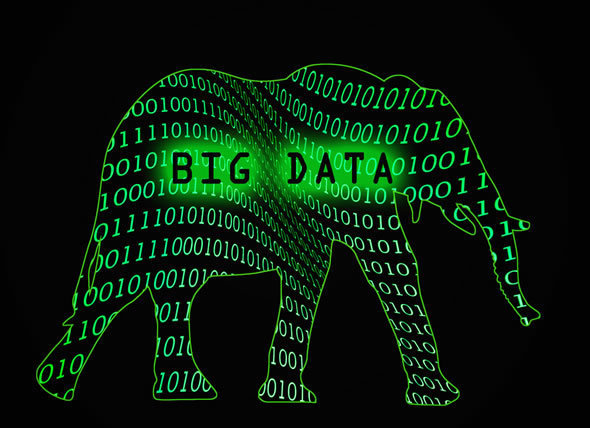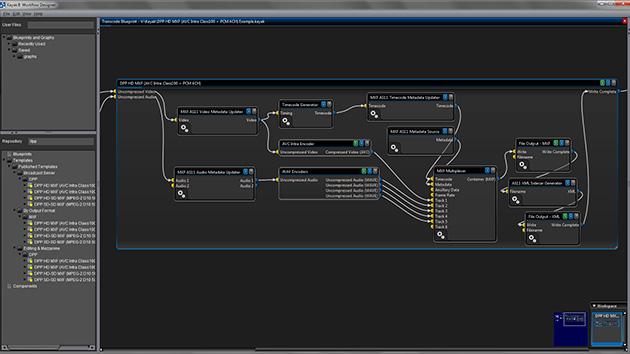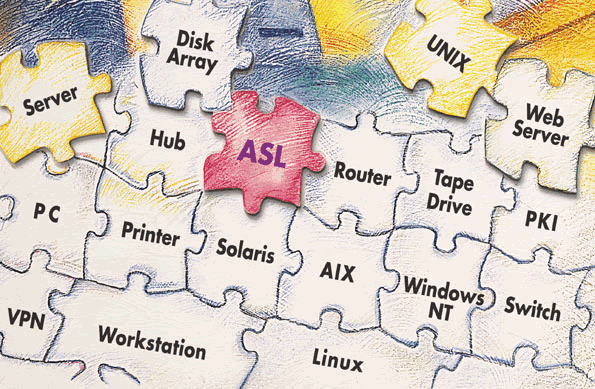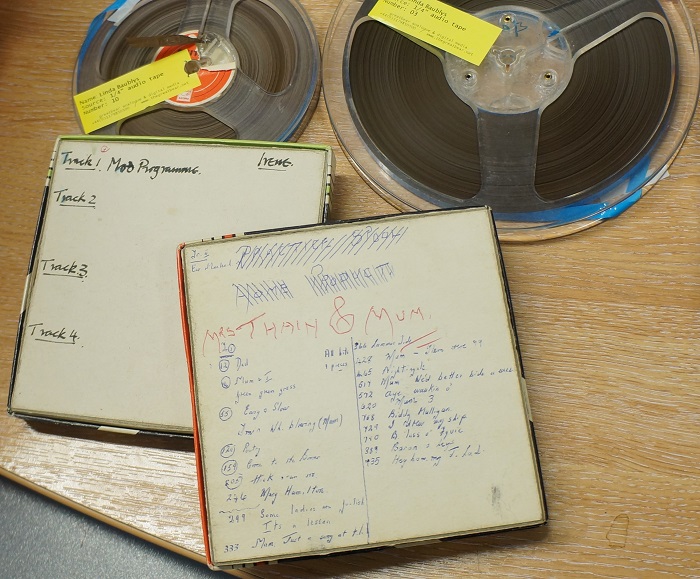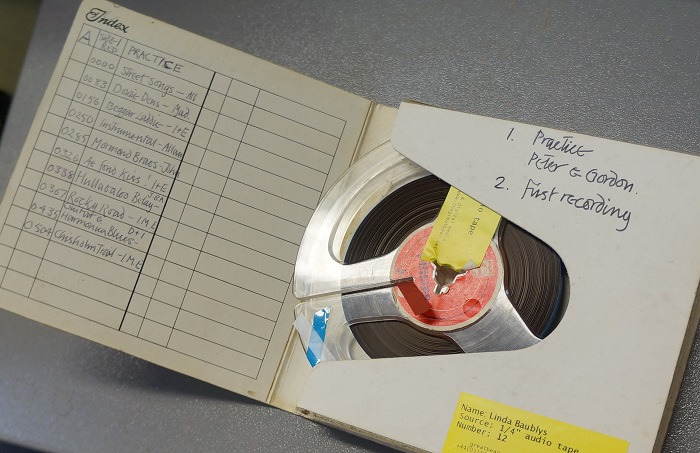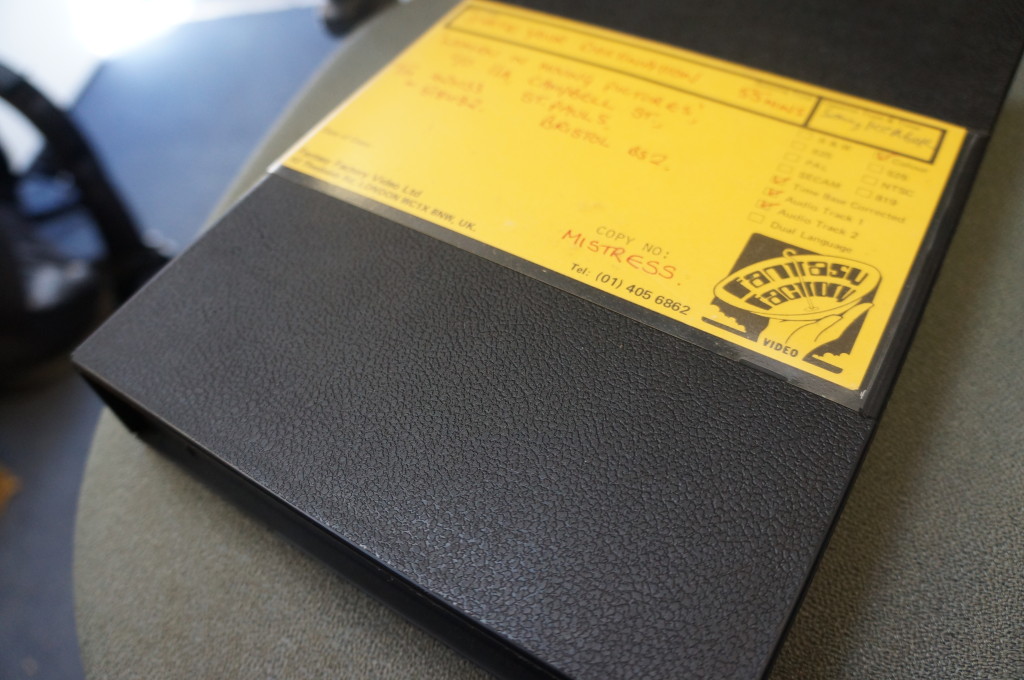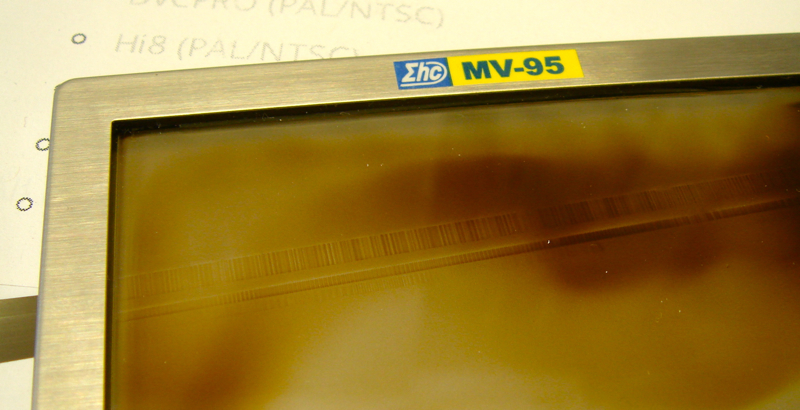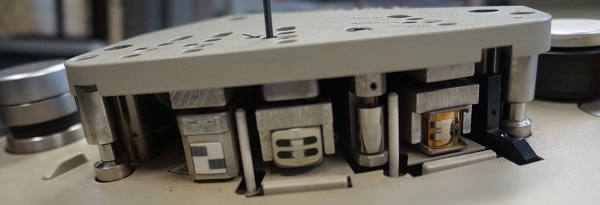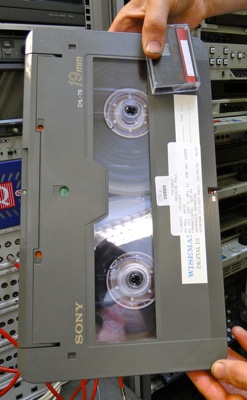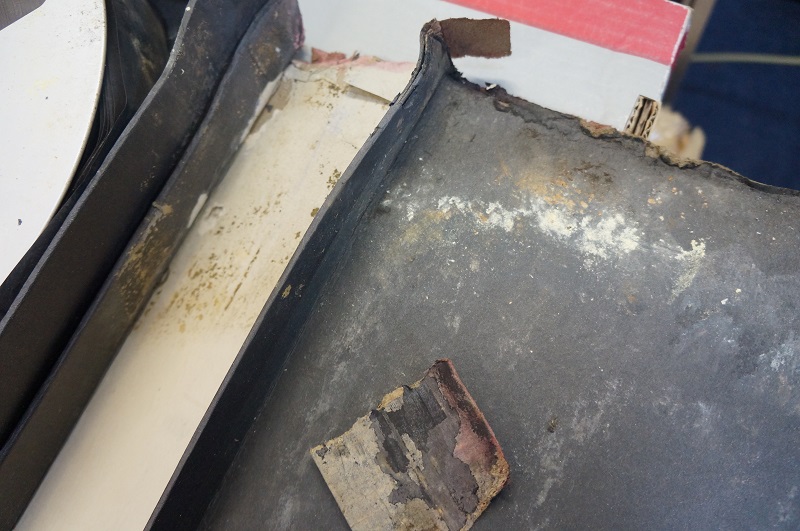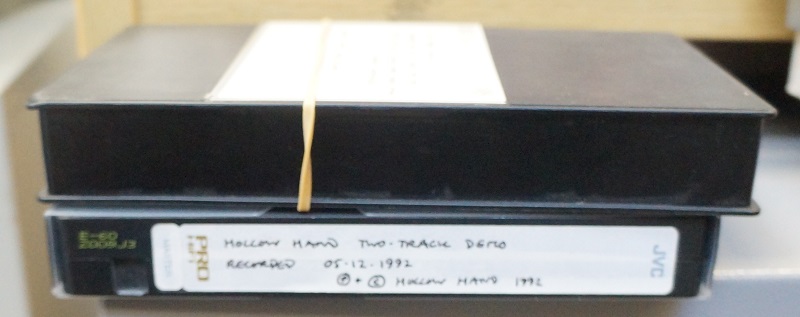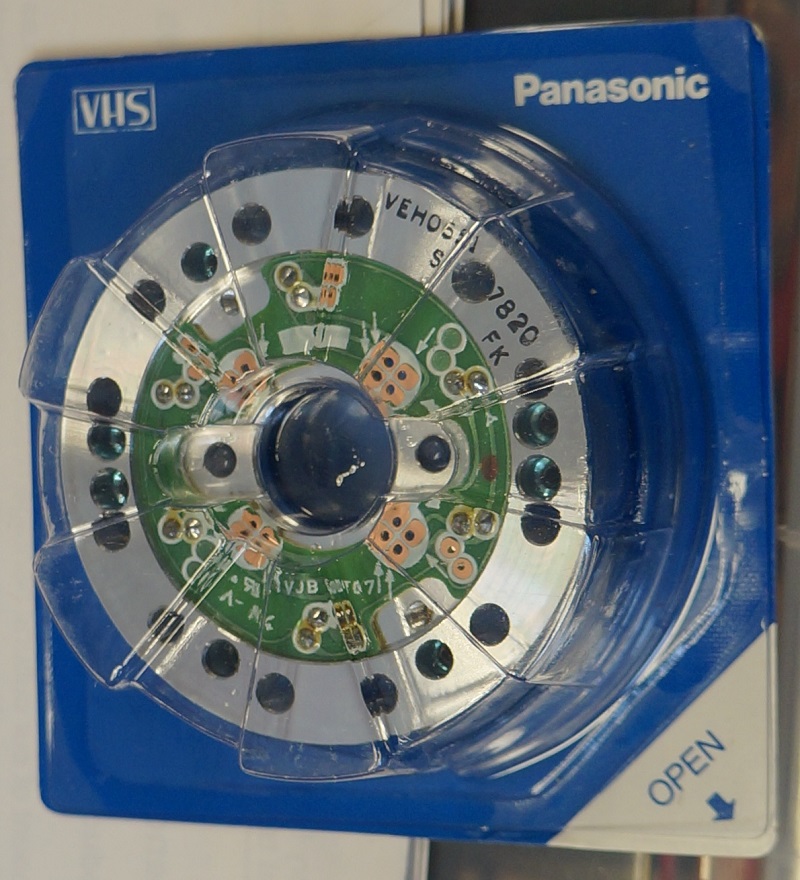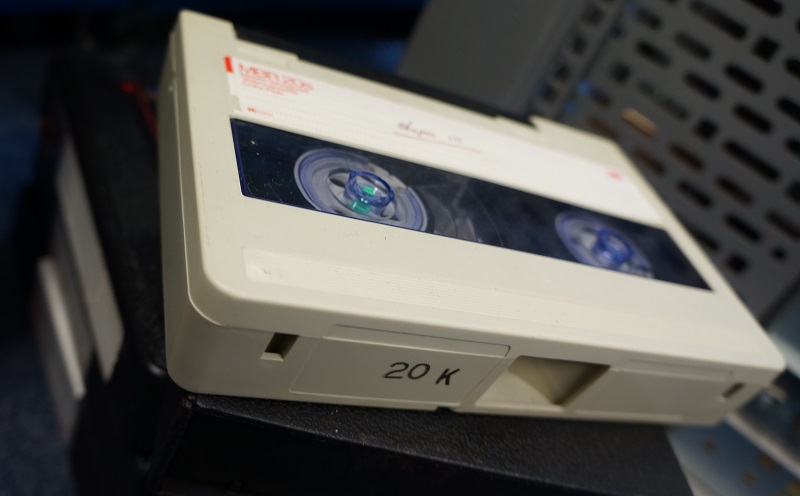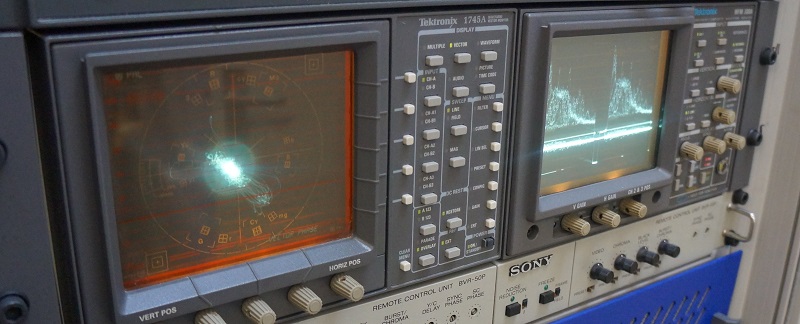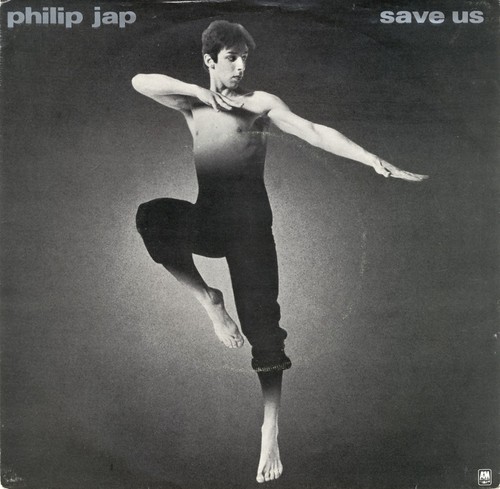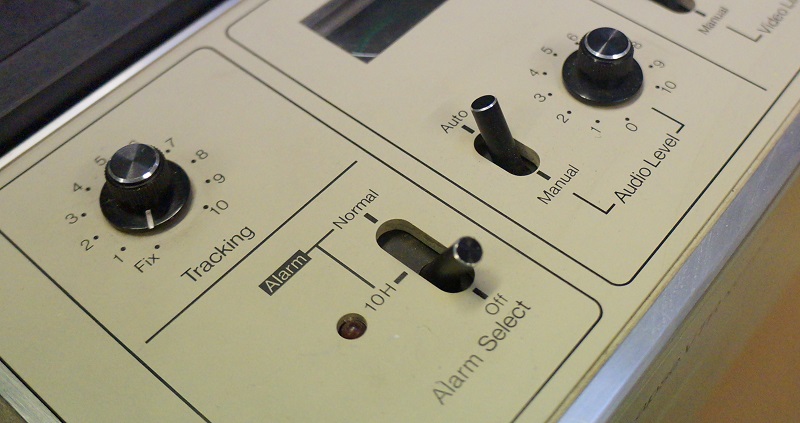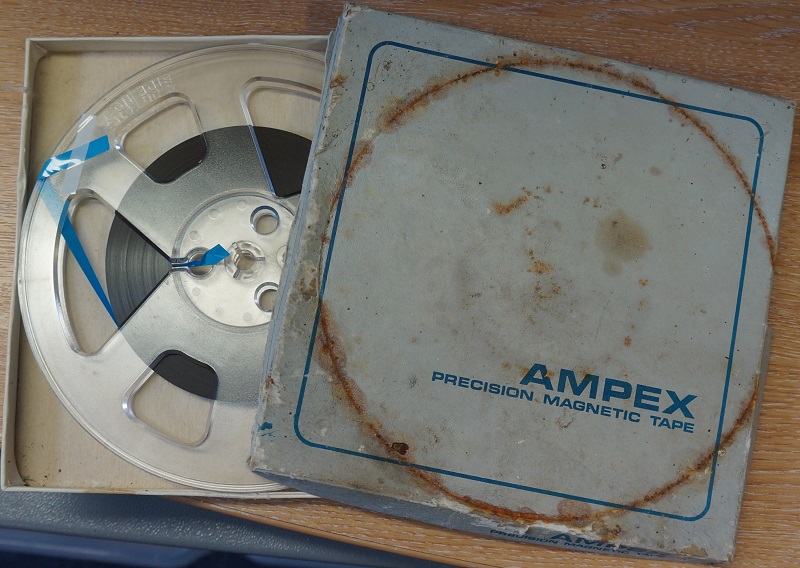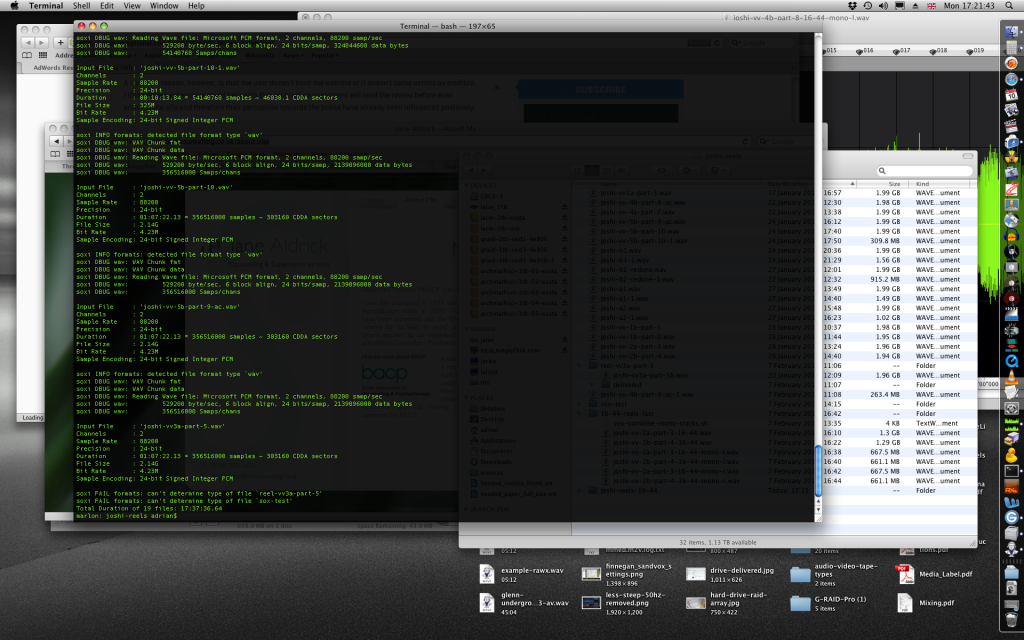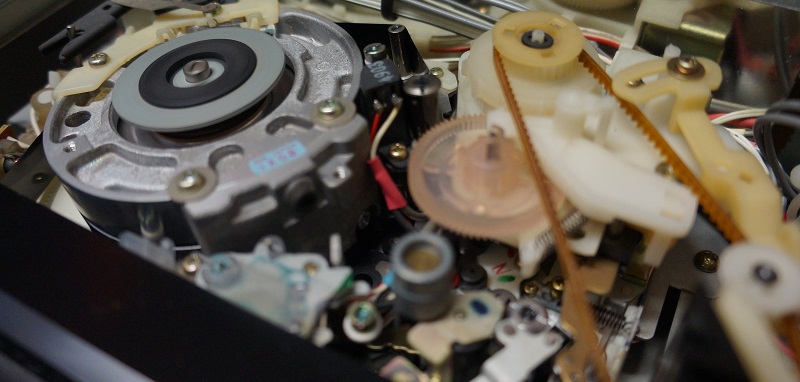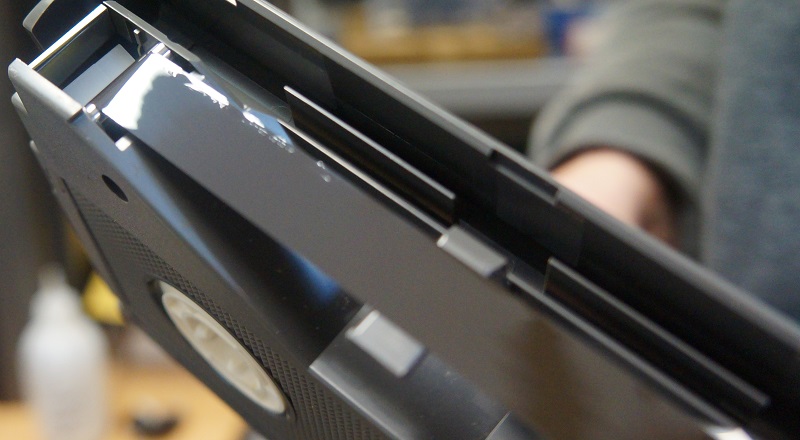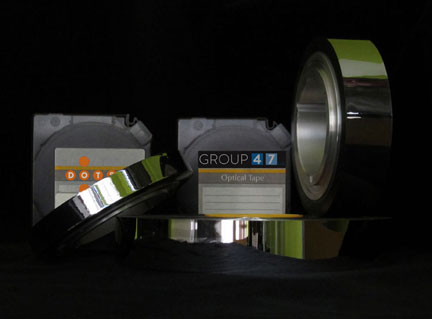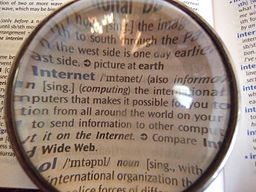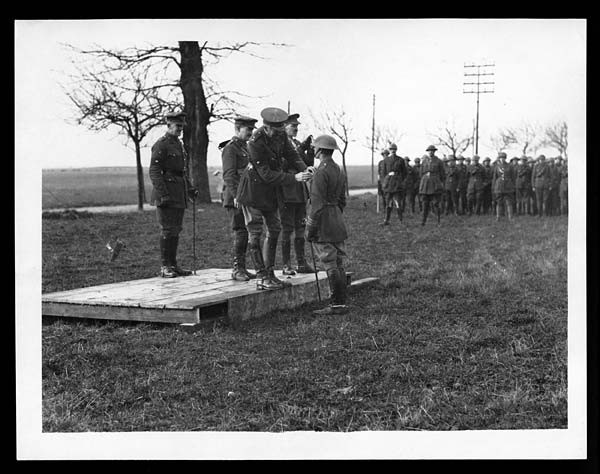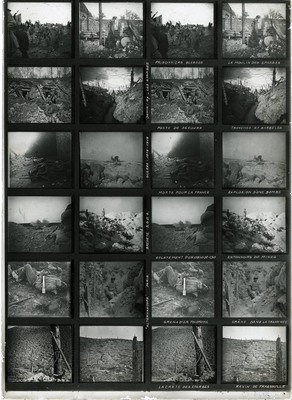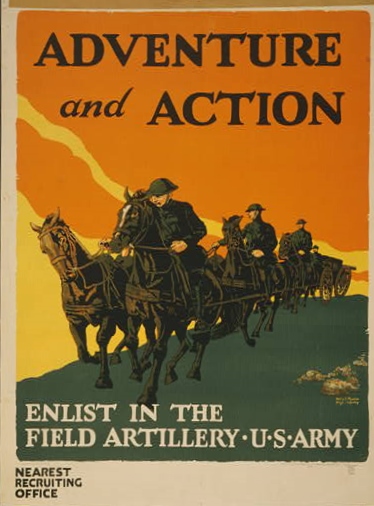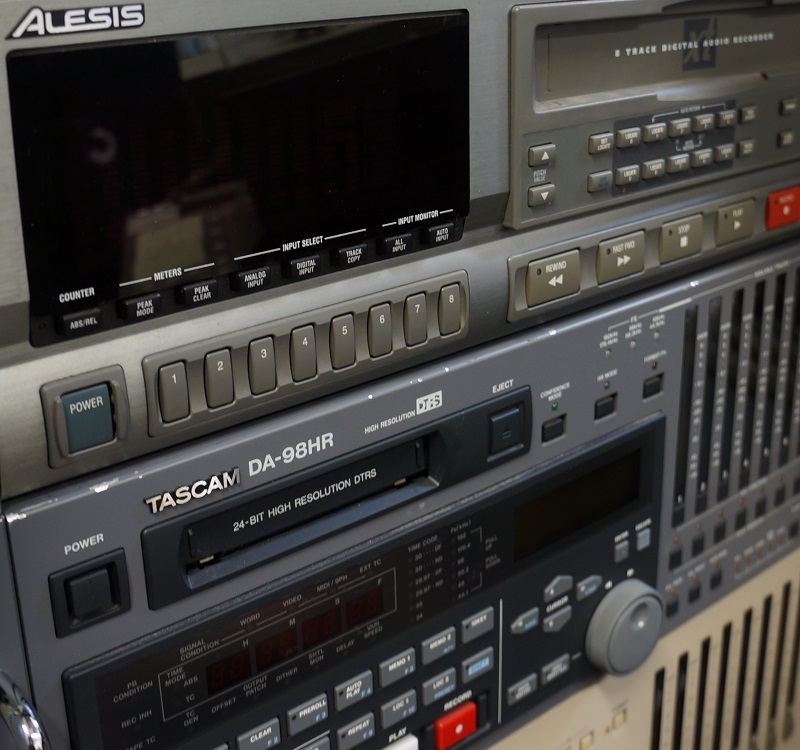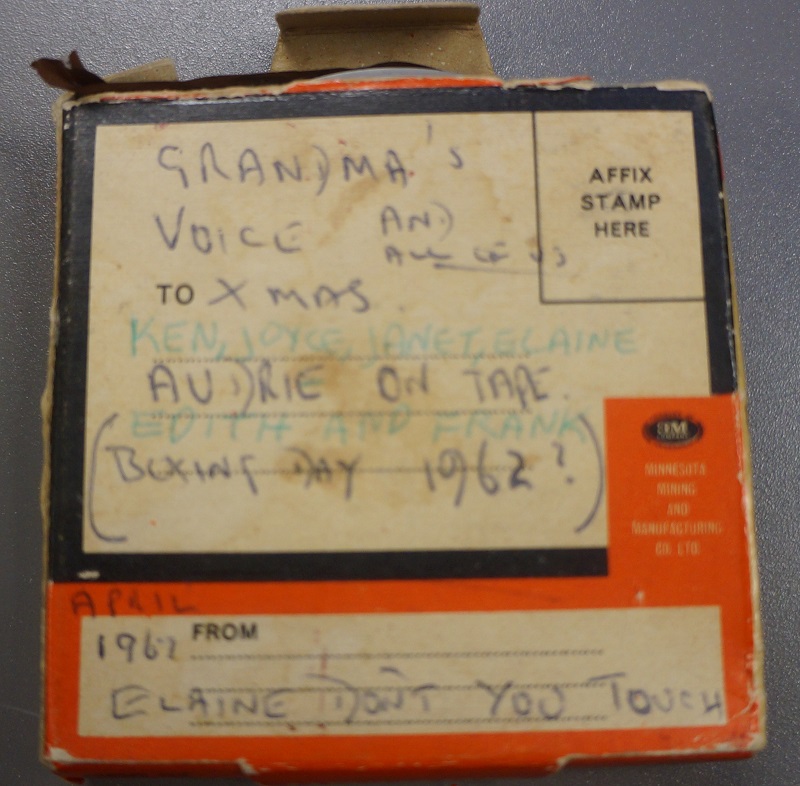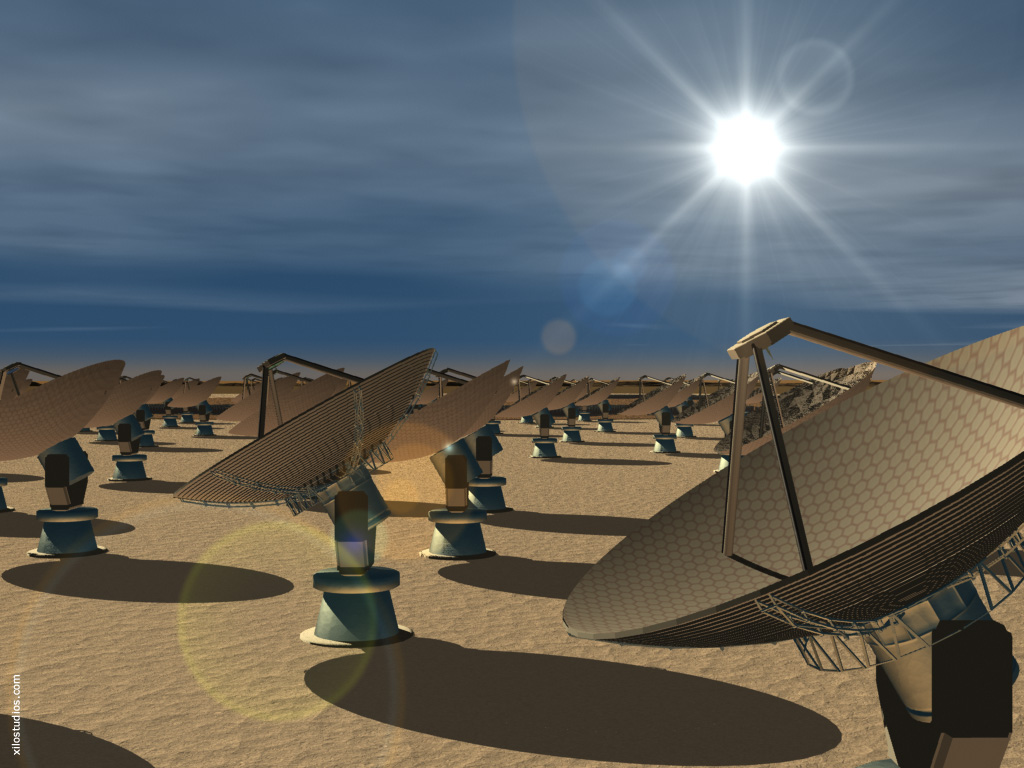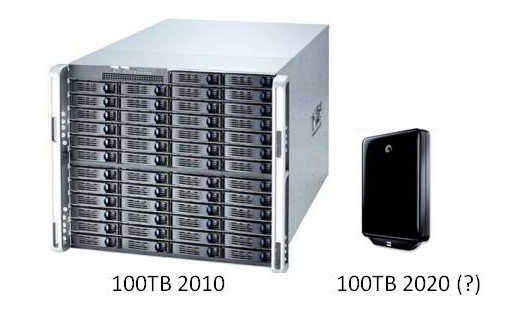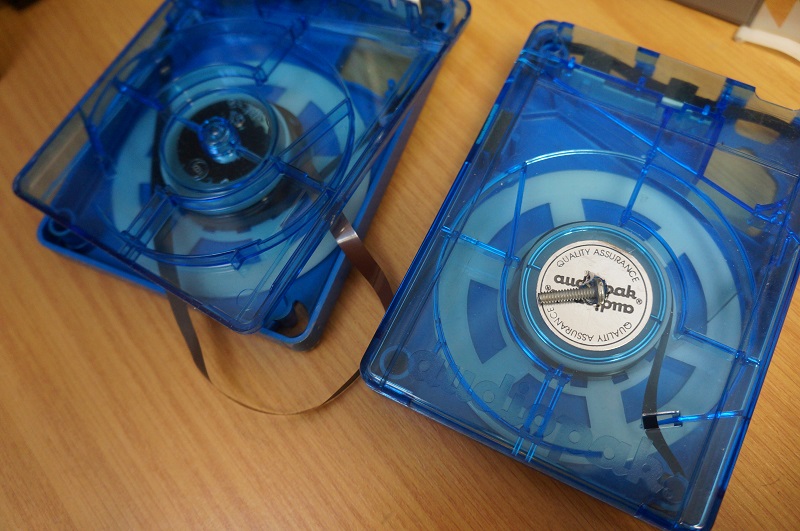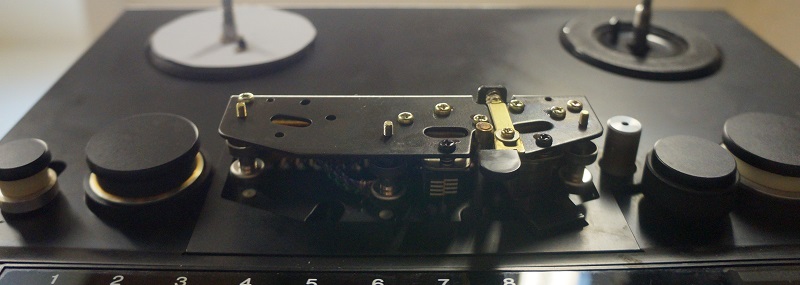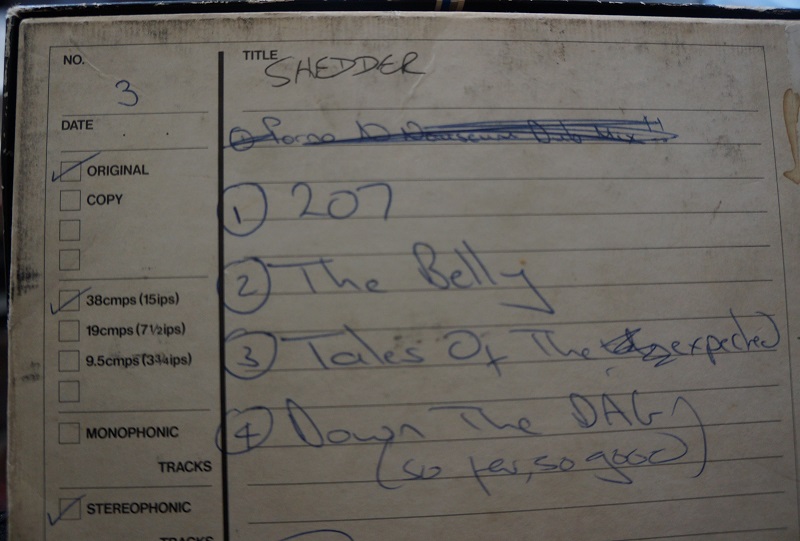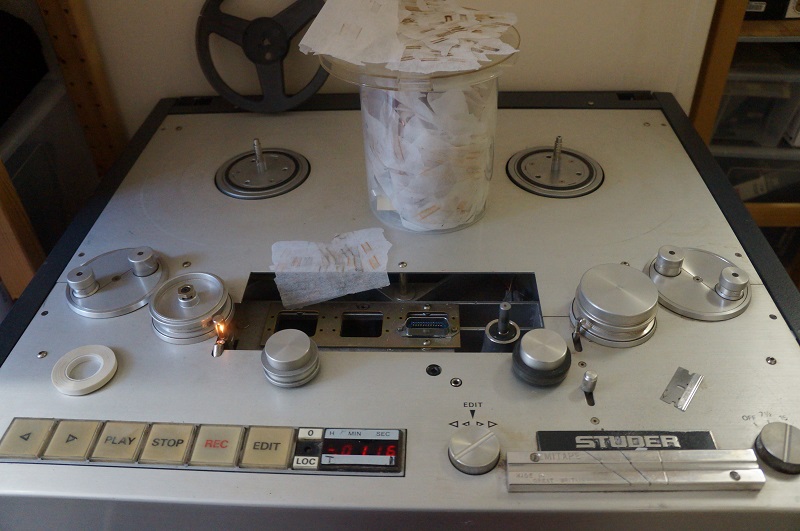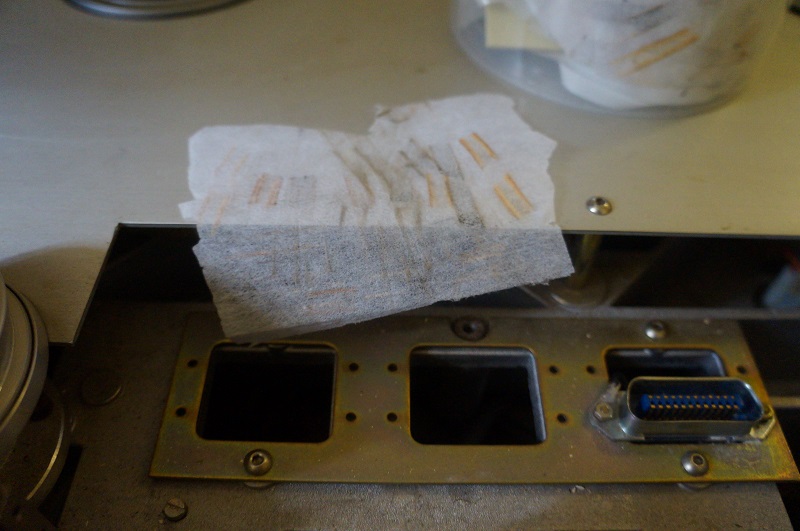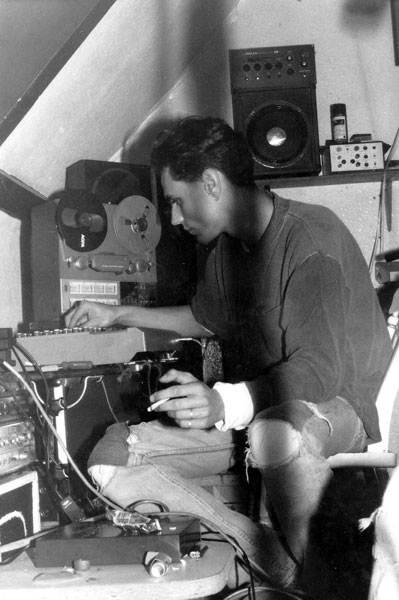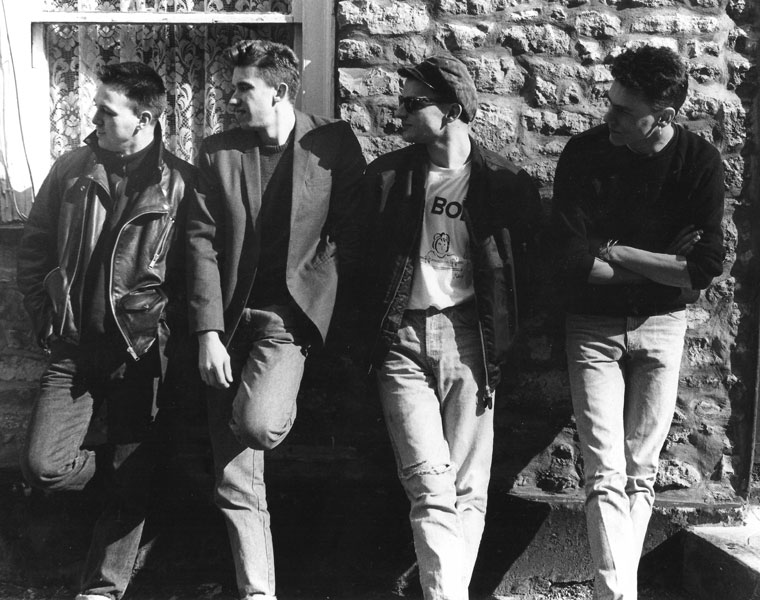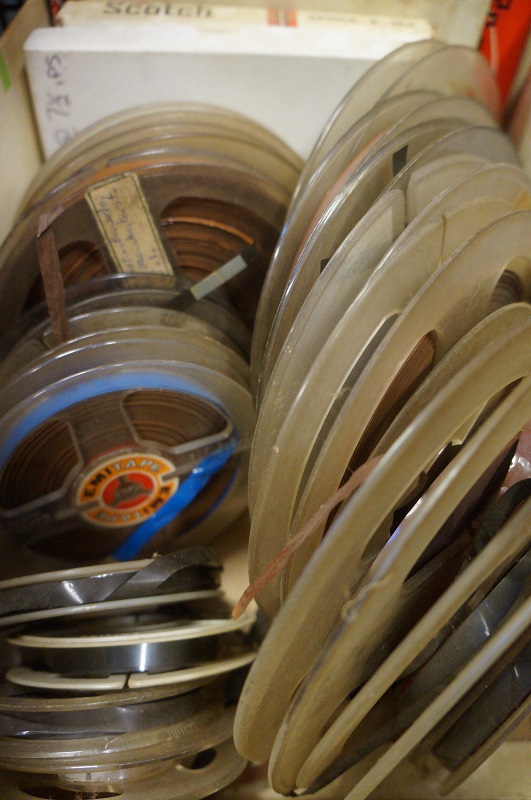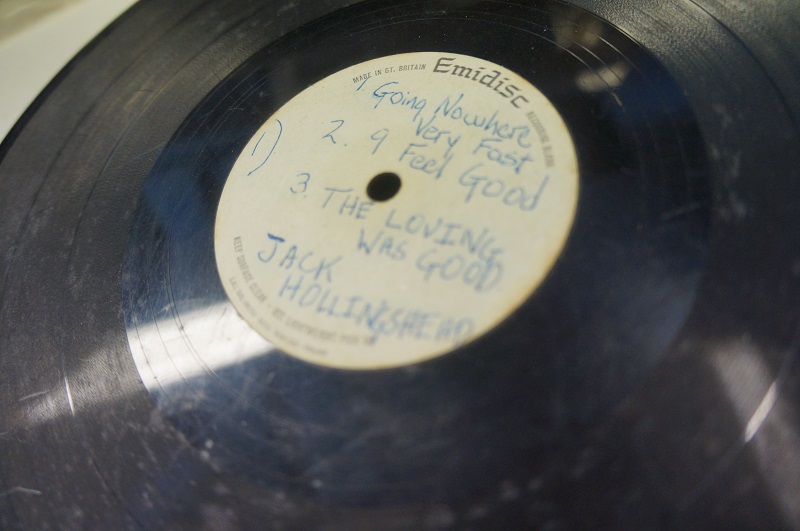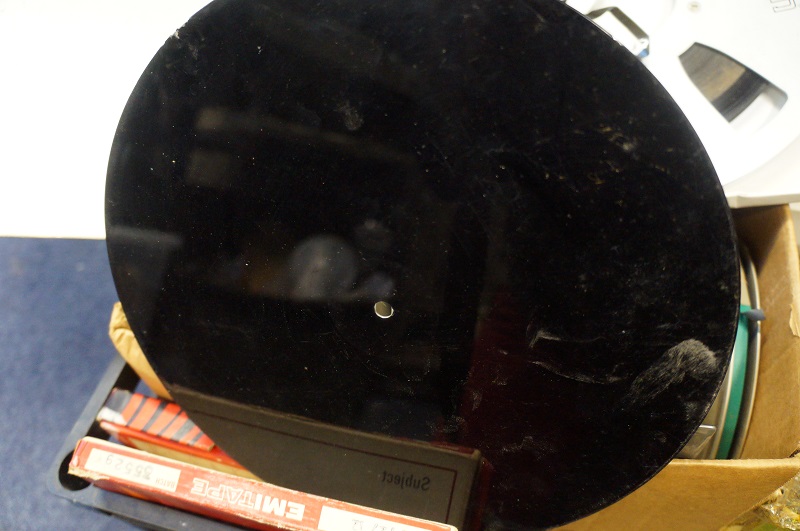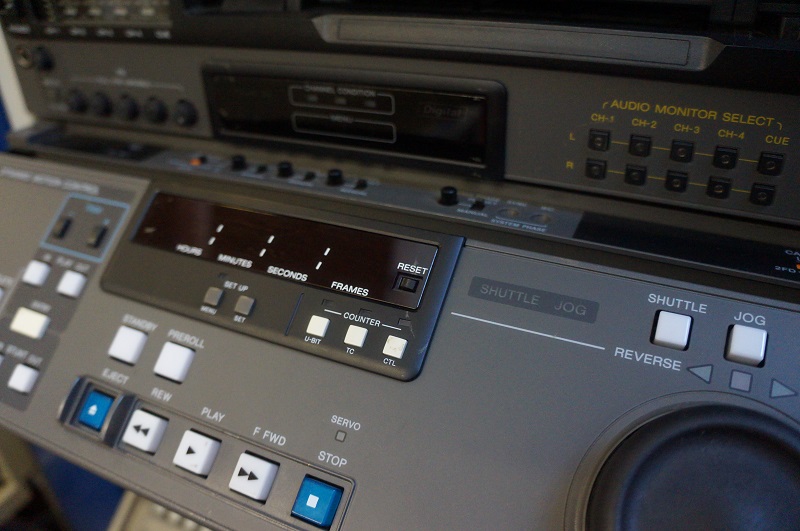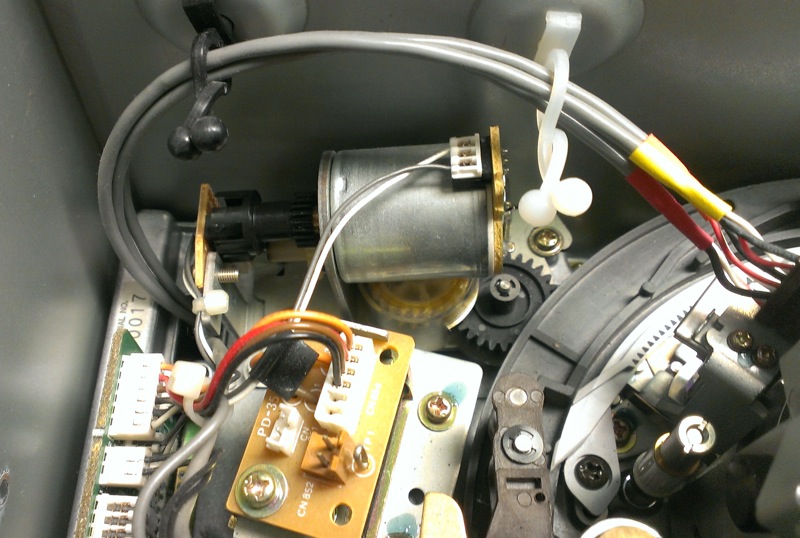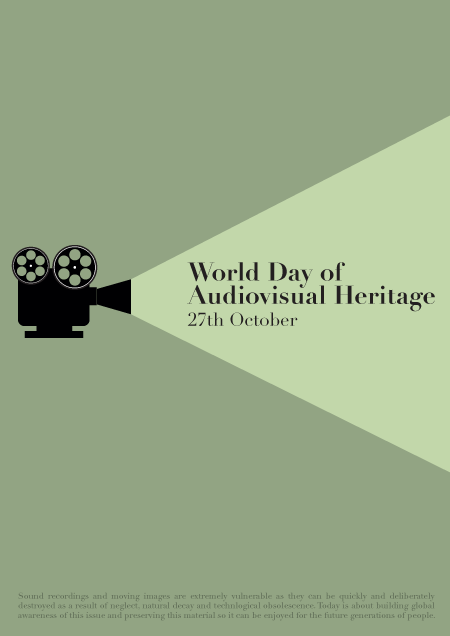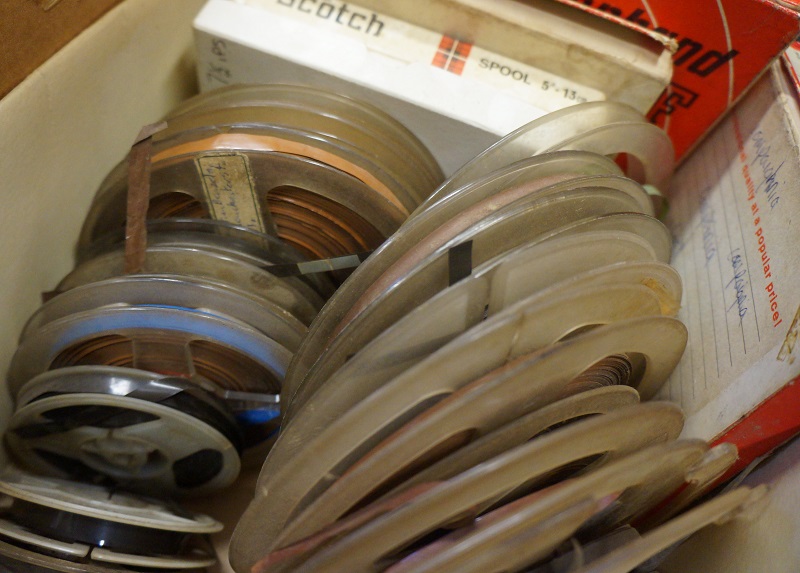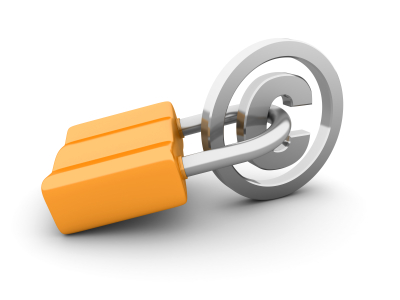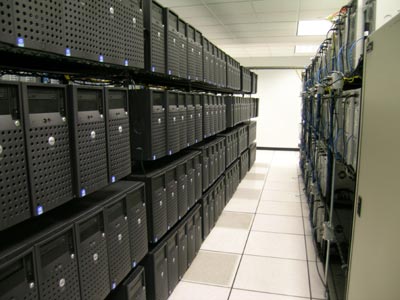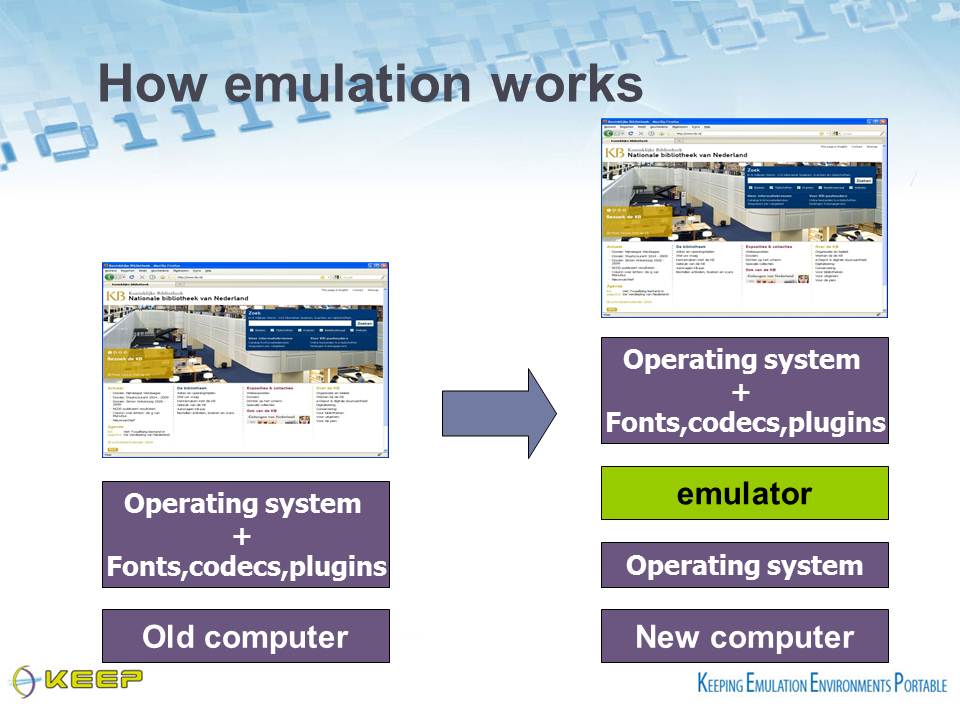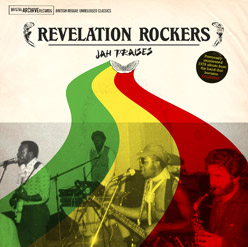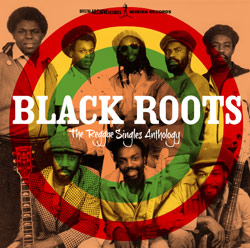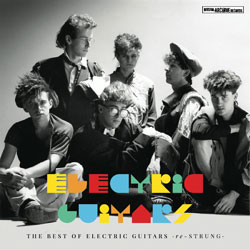
If you're relatively new to the world of digital and AV preservation, all the different approaches can seem overwhelming. Happily, there are many open access resources available that can help you learn more about existing best practices. Below is our selection of free resources to explore. Contact us at Greatbear if your project/ resource is missing!
Magnetic Tape / AV Preservation
- Greatbear audio & video media identification resource is our own browsable portfolio of audio and video media, with links to detailed information and high res images, for all those "what tape is this?" queries.
- The A/V Artifact Atlas is a community-generated resource for people working in digital preservation and aims to identify problems that occur when migrating tape-based media. The Atlas is made in a wiki-format and welcomes contributions from people with expertise in this area - 'the goal is to collectively build a comprehensive resource that identifies and documents AV artifacts.' The Atlas was created by people connected to the Bay Area Video Coalition, a media organisation that aims to inspire 'social change by empowering media makers to develop and share diverse stories through art, education and technology.'
- The International Association of Sound and Audiovisual Archives' website has a wealth of resources related to best practice AV archiving. They publish a bi-annual journal and widely referenced special publications such as Handling and Storage of Audio and Video Carriers and organise an annual conference.
- You can download the ARSC Guide to Audio Preservation here, a practical introduction to caring for and preserving audio collections. It is aimed at individuals and institutions that have recorded sound collections but lack the expertise in one or more areas to preserve them.
- The British Library's Manual of analogue audio restoration techniques written by Peter Copeland is designed as an aid to audio engineers and audio archivists.
- Ray Edmondson's Audio Visual Archiving: Philosophy and Principles (fully revised 3rd edition, 2016) is commissioned by UNESCO and explores audio visual archiving from the perspective of memory institutions and heritage organisations.
- The National Technology Alliance's Magnetic Tape Storage and Handling: A Guide for Libraries and Archives by Dr. John W.C. Van Bogart (1995) is an excellent resource, written in non-technical language and explores the kinds of things that can go wrong with magnetic tape (and how to avoid them!)
- Radical Software is the wonderful searchable database of all issues of independent video journal Radical Software, published in New York in the early 1970s. Articles and info on "...all aspects of independent video and video art back in the Portapak era." The site is a joint project of the Daniel Langlois Foundation of Montreal with Davidson Gigliotti and Ira Schneider.
- Österreichische Mediathek have produced a number of excellent articles under the heading Audio/Video Encoding in Archiving Context. Of particular note, especially for people confused about video codecs and containers, is 'Comparing Video Codecs and Containers for Archives.'
- The Scart website contains many articles and resources related to AV heritage, including 'A Short Guide to Choosing a Digital Format for Video Archiving Masters.'
- The National Film and Sound Archive of Australia have produced an in-depth online Preservation Guide. It includes a film preservation handbook, an audiovisual glossary, advice on caring for your collection and disaster management.
- The US-based Video Preservation Website has an amazing Library of Video History, Science and Technology with PDFs of books such as The Video Guide by Charles Besinger and historic documents relating to digital preservation.
- The British Library's Playback and Recording Equipment directory is well worth looking through. Organised chronologically (from 1877 - 1990s), by type and by model, it includes photos, detailed descriptions and you can even view the full metadata for the item. So if you ever wanted to look at a Columbia Gramophone from 1901 or a SONY O-matic tape recorder from 1964, here is your chance!
- Vintage Technics - Russian site of a personal collection of extremely rare tape recorders, radios, televisions and detective recording devices.
- The Museum of Obsolete Media, affiliated with the Media Archaeology Lab is an online directory of, yes you've guessed it, obsolete media. It includes information about audio, video, data and file formats. The curator of the site points to the site Lost Formats as a strong inspiration for his work.
- Project C-90: An ultimate audio tape guide with an impressive collection of different brands of compact, micro and mini-cassettes.
- The Tape Tardis offers a useful inventory of audio cassettes organised into tape type (e.g., normal bias, chrome, ferro-chrome and metal) and brands.
- The Preservation Self-Assessment Program (PSAP) is a free online tool that helps collection managers prioritise efforts to improve conditions of collections. It is specifically designed to help organisations who have no prior training in digital preservation.
- Some very useful and interesting articles on the Damsmart Blog page around audio and video tape preservation.
- Richard Hess is a US-based audio restoration expert. He is very knowledgeable and well-respected in the field, and you can find all kinds of esoteric tape wisdom on his site.
- LabGuy's World is the site of an avid collector of video hardware and related documentation, hosting a wealth of information on 'the history of video tape recorders before Betamax and VHS' including brochures, manuals and technical data.
- We love magnetic tape and the machines that play it. Greatbear belongs to an international audio-visual media conservation community, and tape blog is our own online notebook for sharing knowledge. Comments welcome!
Digital Preservation
- The Digital Preservation Coalition's website is full of excellent resources including a digital preservation jargon buster, case studies, blog and the fully revised second edition of the Digital Preservation Handbook (2015).
- Ashley Blewer's 2021 Digital Preservation Coalition Technology Watch Report, Pragmatic Audiovisual Preservation, aims to provide easily digestible – and pragmatic - guidance for practitioners with a basic knowledge of digital preservation concepts and archival practices, but without expertise in audiovisual materials.
- AV Preserve are a US-based consultation company who work in partnership with organisations to implement digital information preservation and dissemination plans. The Papers & Publications and Presentations, sections of theie site include research about diverse areas such as assessing cloud storage, digital preservation software, metadata, making an institutional case for digital preservation, managing personal archives, primers on moving image codecs, disaster recovery and many more. AV Preserve have developed a number of open source collection management tools such as the AVCC Inventory and Collection Management Tool (2015) and the Cost of Inaction calculator. Their website also has a regularly updated blog.
- Indiana University Bloomington Media Preservation Initiative is another good US-based resource. For academic institutions who want to see an example of a large digital preservation strategy in action, the publication Meeting the Challenge of Media Preservation: Strategies and Solutions, will be very useful.
- The US Library of Congress' blog The Signal is regularly updated by a number of different authors and is full of interesting perspectives. While exploring this site you should also check out the NDSA's National Agenda for Digital Stewardship which nicely summarises many of the latest perceived challenges for digital preservation. As ever, the site also includes information about tools that are of interest to the digital preservation community as well as resources about digital file format sustainability.
- Preservation Guide Wiki - Set up initially by Richard Wright, BBC as early as 2006, the wiki provides advice on getting started in audiovisual digital preservation, developing a strategy at institutional and project based levels. Also of interest is Richard's Preserving Moving Images and Sound (2nd Edition, 2020).
- The AVA_NET Library is a n.etwork organisation focussing on gathering and sharing knowledge around audio visual archiving, and excellent knowledge base. Some of the former PrestoCentre's content is archived here.
- The European Archival Records and Knowledge Preservation (E-Ark) project promises to collect important research about the sustainability of digital archives across Europe. The website is currently being developed so don't expect much from it, but it is good to know this research is happening.
- Northeast Document Conservation Centre (USA) - Digital Preservation Reading List, a detailed annotated bibliography has been compiled to acquaint readers withy the challenges associated with developing a digital preservation plan and repository, and successful strategies for overcoming those challenges.
- To explore the wider context for digital preservation, take a look at this Digital Technology Preservation Timeline developed by Cornell University.
- Europeana's Report and Recommendations from the Task Force on Metadata Quality (2015) is a detailed document about the production of metadata geared toward the cultural heritage sector.
- PREFORMA project aims to address the challenge of implementing good quality standardised file formats for preserving data content in the long term. The main objective is to give memory institutions full control of the process of the conformity tests of files to be ingested into archives. Advocates for FFV1 and Matroska standardisation for video.
- The National Digital Stewardship Residency New York is a programme that aims to advance professional development in digital preservation. A great place to learn about the 'bleeding edge' of best practice in the area.
- For less tech-intensive forays into the world of digital preservation, Preservation Underground based at Duke University, the British Library's Sound and Vision blog, and Trevor Owens site are good places to visit.
Digital Preservation Tools and Software
- For open source digital preservation software check out The Open Planets Foundation (OPF), who address core digital preservation challenges by engaging with its members and the community to develop practical and sustainable tools and services to ensure long-term access to digital content. The website also includes the very interesting Atlas of Digital Damages
- The EU-funded SCAPE project developed scalable services for planning and execution of institutional preservation strategies on an open source platform. Here are their final best practice guidelines and recommendations for Large-scale long-term repository migration; for Preservation of research data; for Bit preservation.
- Archivematica is a free and open-source digital preservation system that is designed to maintain standards-based, long-term access to collections of digital objects.
- Community Owned Digital Preservation Tool Registry - 'COPTR is also an initiative to collate the knowledge of the digital preservation community on preservation tools in one place. Instead of organisations competing against each other with their own registries, COPTR is bringing them together. In doing so it's objective is to provide the best resource for practitioners on digital preservation tools.' Also check out the tool grid generator designed to help practitioners identify and select tools that they need to solve digital preservation challenges.
- Digital Preservation Tools @ the National Archives - On this page you can download a number of tools developed by the The Digital Preservation and Digital Repository Infrastructure teams at The National Archives including CSV Schema and CSV Validator, UTF-8 Validator and DROID - File Type Identification Tool.
- Mediainfo is a very useful open source software tool that displays technical and tag data for video and audio files.
- BWF MetaEdit permits the embedding, editing, and exporting of metadata in Broadcast WAVE Format (BWF) files. This tool can also enforce metadata guidelines developed by the Federal Agencies Audio-Visual Working Group, as well as recommendations and specifications from the European Broadcasting Union (EBU), Microsoft, and IBM.
- MediaConch is an open source AV preservation project currently being developed by the MediaArea team are 'dedicated to the further development of the standardization of the Matroska and FFV1 formats to ensure their longevity as a recommended digital preservation file format'. Also check out the blog.
- ffmprovisr - this app makes ffmpeg easier by helping users through the command generation process so that more people can reap the benefits of FFmpeg. Each button displays helpful information about how to perform a wide variety of tasks using FFmpeg.
- Association of Moving Image Archivists' AMIA Open Source page - An organisational account for collaboration on resources that support the preservation and use of moving image media. Includes tools such as ffmprovisr, vrecord and cable bible.
- Library Carpentry - Software skills for library professionals - includes introductory lessons on Github, SQLite, OpenRefine and more.
- For those interested in code and AV archiving be sure to visit the personal websites of Ashley Blewer, Dave Rice and Kieran O'Leary.
Digital Heritage
- In 2005 UNESCO declared 27 October to be World Audio
- visual Heritage Day. The web pages are an insight into the way audiovisual heritage is perceived by large, international policy bodies.
- Be sure to take advantage of the open access digital heritage articles published by Routledge. The articles are from the International Journal of Heritage Studies, Archives and Records, Journal of the Institute of Conservation, Archives and Manuscripts and others.
- The Digital Curation Centre works to support Higher Education Institutions to interpret and manage research data. Again, this website is incredibly detailed, presenting case studies, 'how-to' guides, advice on digital curation standards, policy, curation lifecycle and much more.
- Europeana is a multi-lingual online collection of millions of digitised items from European museums, libraries, archives and multi-media collections.
Miscellaneous Technology
- The BBC's R & D Archive is an invaluable resource of white papers, research and policy relating to broadcast technology from the 1930s onwards. As the website states, 'whether it’s noise-cancelling microphones in the 1930s, the first transatlantic television transmission in the 1950s, Ceefax in the 1970s, digital radio in the 1990s and HD TV in the 2000s, or the challenge to "broadcasting" brought about by the internet and interactive media, BBC Research & Development has led the way with innovative technology and collaborative ways of working.'
- IRENE technology, developed by the Northeast Document Conservation Center in the US, applies a digital imaging approach to audio preservation. IRENE currently works with fragile media such as Wax cylinders, Lacquer discs (a.k.a. “acetate” discs), Aluminum transcription discs, Shellac discs, Tin foils and other rare formats (e.g. Dictabelt, Voice-O-Graph, etc.).


